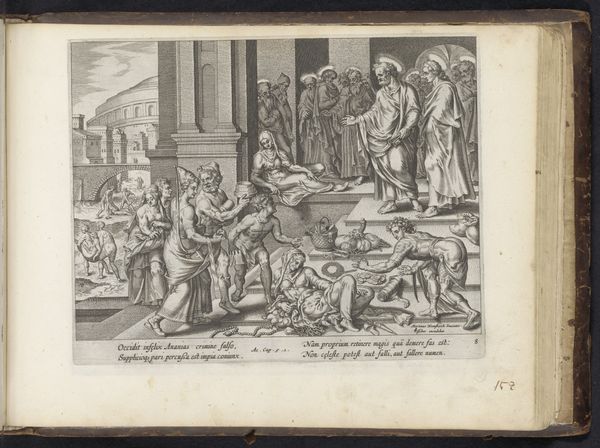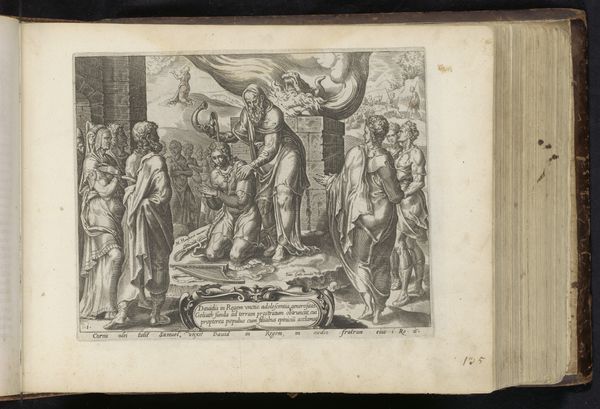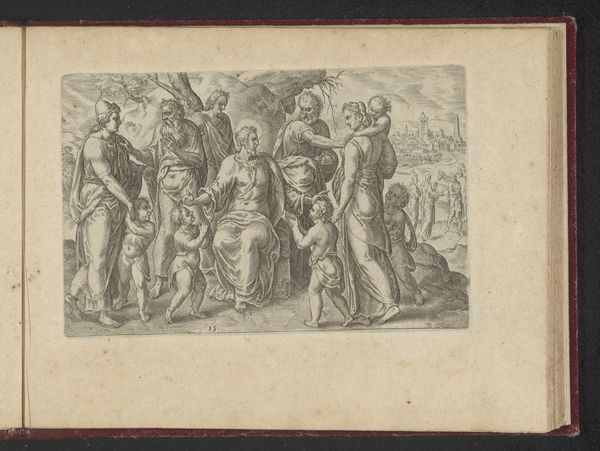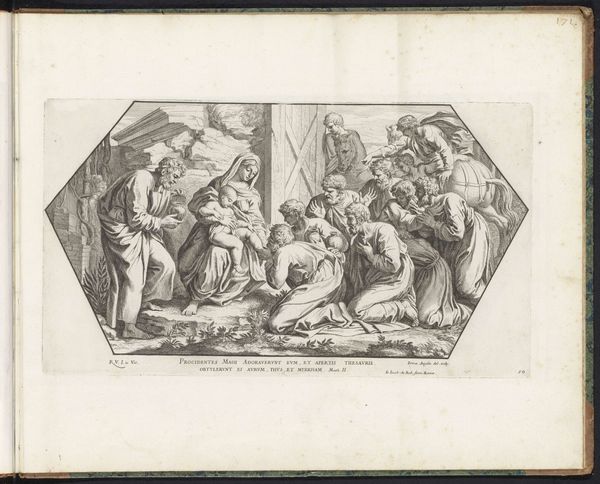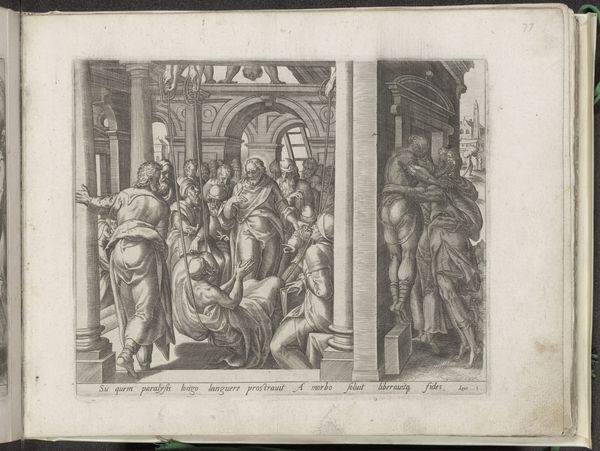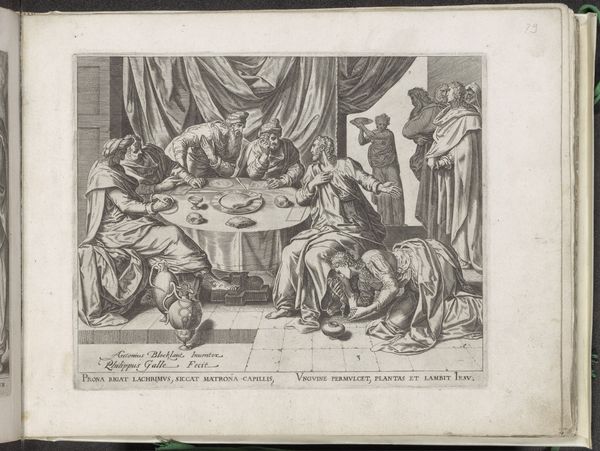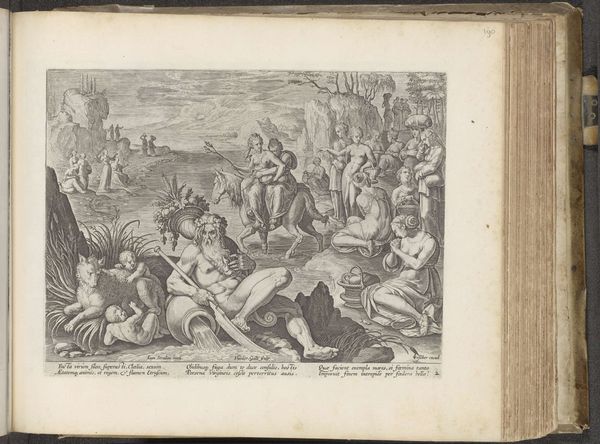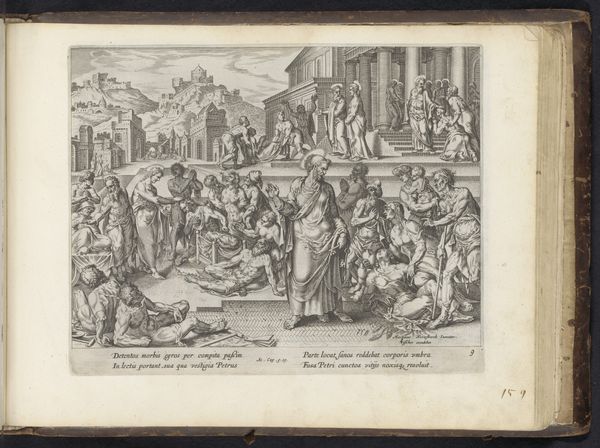
drawing, print, engraving
#
drawing
#
narrative-art
#
baroque
# print
#
figuration
#
coloured pencil
#
line
#
history-painting
#
engraving
Dimensions: height 172 mm, width 244 mm
Copyright: Rijks Museum: Open Domain
Curator: What a striking engraving. Here at the Rijksmuseum, we have this work called *Uitstorting van de Heilige Geest,* likely created sometime between 1578 and 1646 by an anonymous artist. It's a print, combining engraving and drawing techniques. Editor: My immediate impression is one of dramatic tension. The composition is dense, the figures are tightly packed, and that burst of light above really pulls the eye. Curator: Indeed. The artist has masterfully used line and shadow to create a real sense of depth and movement. Notice how all the figures are oriented towards the dove of the Holy Spirit at the top—the lines all point there. Semiotically, that’s no accident. Editor: Absolutely. Consider this scene within the broader context of the Counter-Reformation. Imagery like this was critical for reinforcing Catholic doctrine and inspiring religious fervor. It projects power in an age of schism. Curator: Observe the dynamism rendered simply through line work: drapery, musculature, a kind of Baroque excess—everything participates in this swirling visual energy focused on the representation of the Spirit’s emanation. Editor: I wonder how such images were disseminated. Prints allowed for widespread distribution. It's fascinating to think about how such visuals were meant to move the faithful and underscore a message of unified belief during a turbulent period in European history. The print medium gave wings to these visual theologies. Curator: Thinking of its structure makes me curious how it would compare with contemporary Northern masters using different stylistic means. Though created anonymously, its internal consistency denotes high caliber training. Editor: True, focusing on its internal architecture helps us understand better the artist's influences, training, and creative choices, giving us a micro history, almost! Overall, I am struck by how history is crystallized through a single image in time. Curator: And I, with an appreciation for the formal qualities, find that it yields tremendous potential for detailed contemplation of technique, perspective, and composition.
Comments
No comments
Be the first to comment and join the conversation on the ultimate creative platform.

